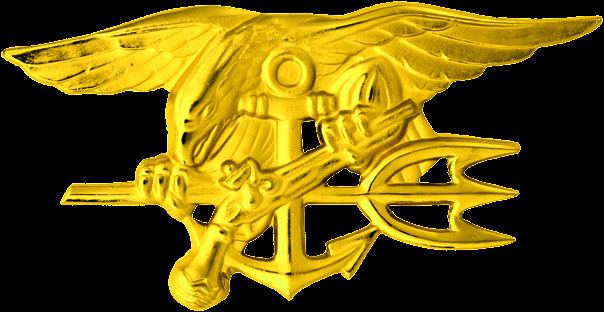Type Single-grade badge | Established 1970 | |
 | ||
Awarded for Completing Basic Underwater Demolitions/SEAL training and SEAL Qualification Training | ||
The Special Warfare insignia, also known as the “SEAL Trident” or its more popular nickname, "The Budweiser," recognizes those members of the United States Navy who have completed the Basic Underwater Demolition/SEAL (BUD/S) training, completed SEAL Qualification Training (SQT) and have been designated as U.S. Navy SEALs. It is one of the most recognizable military badges of the U.S. Navy.
Contents
History
Established on 16 October 1970, the Special Warfare insignia was initially issued in two grades, being a gold badge for officers and silver for enlisted. In the 1970s, the Silver SEAL badge was abolished and the Special Warfare Badge was issued thereafter in a single grade. The SEAL badge is therefore unusual in the Navy in that it is one of the few badges issued in a single grade for both officers and enlisted personnel. This is partly due to the combined training that both officers and enlisted receive, side by side, when involved in BUD/S training.
The Special Warfare insignia consists of a golden eagle clutching a U.S. Navy anchor, trident, and flintlock style pistol. The decoration is considered a "successor badge" to the obsolete Underwater Demolition Badge.
Designator and title
Sailors who complete SEAL training are reclassified to the Special Warfare Operator (SO) rating. Prior to the establishment of the SO rating in 2006, SEAL operators were sourced from regular Naval ratings, with the title of SEAL treated like a warfare qualification, attaching (SEAL) after your rate.
